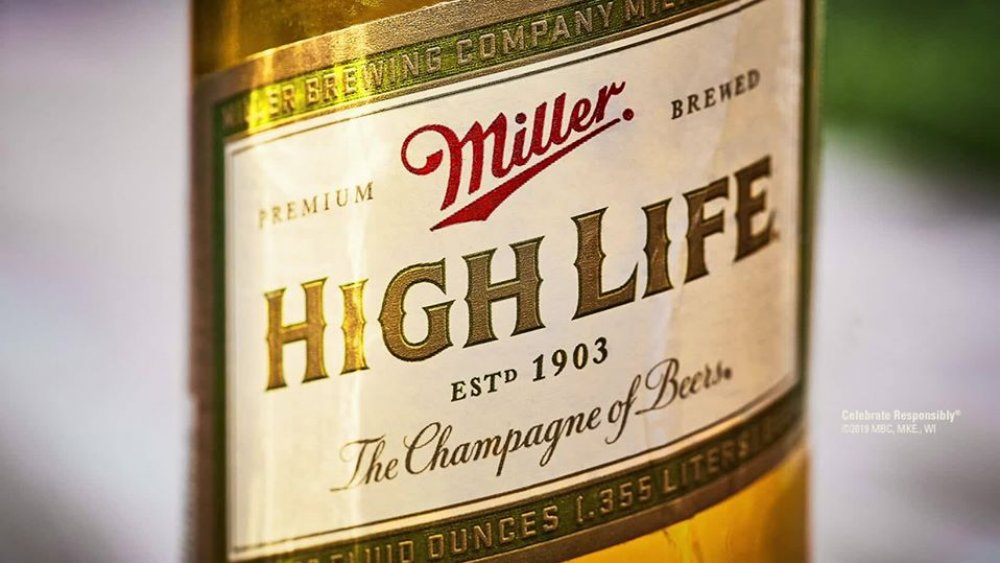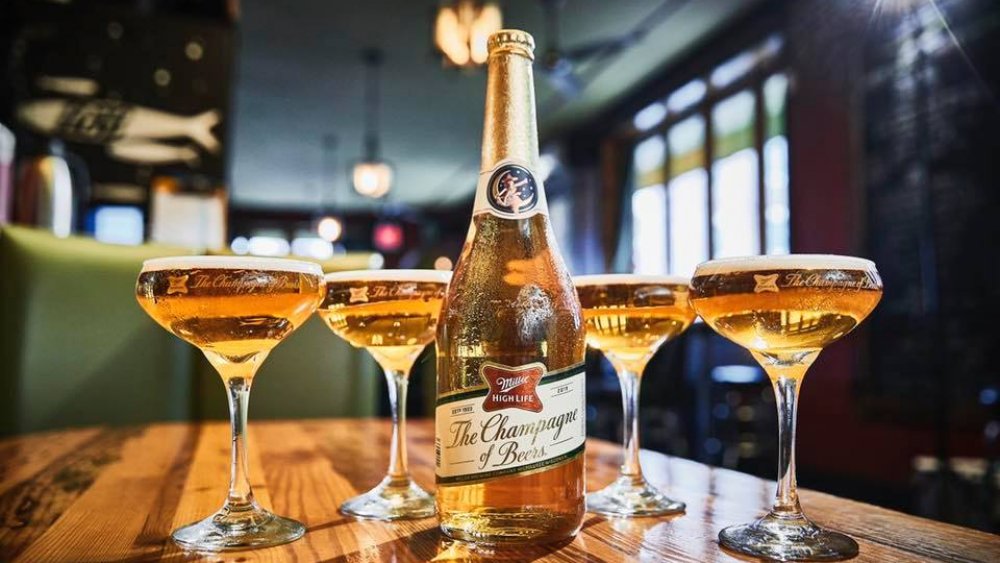The Real Reason Miller High Life Is Known As The 'Champagne Of Beers'
If you've ever thought that the Miller High Life slogan, 'Champagne of Beers,' sounds like a hipster's hashtag from an Instagram story being posted from a cracked booth in a dive bar, you are not alone. In the modern world of full-bodied, fragrant craft beer, many people scoff at cheap, light beer like Miller High Life or PBR. However, one look at a vintage photo or ad of the bottled beer, and you just might understand the reason behind the slogan.
When Miller High Life first came on the scene, it was New Year's Eve of 1903 (via VinePair). When the lager was first introduced that year, bottled beer was far from common. Typically, beer could only be bought in taverns where it was consumed. Those with wood or metal pails, like an early growler, could buy the booze to take home too. So the introduction of a beer bottled in clear glass to display its clarity was certainly something new.
The long-necked bottles themselves were even designed with Champagne bottles in mind. The final touch, however, was the stylish foil that covered the top and long neck — again, very much like Champagne bottles.
Rebranding Miller High Life in the '70s
High Life was still considered a luxury product when it was acquired by Philip Morris Cos. in 1969. By 1970, the beer was rebranded as a working man's drink, thanks to the work of McCann-Erikson, the company's new advertising agency. Hence, "Miller Time" was born. The campaign helped Miller High Life sales increase to four times what they were before the catchy rebranding.
In the years since the heyday of "Miller Time," the company has sought different marketing tactics — one of which included actual Champagne bottles. In 2018, High Life 'Champagne of Beers' could be bought in the most literal sense yet for the holiday season, according to Food & Wine.
Though the brand stands by its traditional clear glass bottles (which doesn't do anything for the already questionable taste), there is a growing market for Miller High Life according to Forbes — food industry workers, and it's even starting to trend outside these circles. Even though the former luxury product sometimes makes a return to its original roots, it always seems to come back as the drink of the working class.

